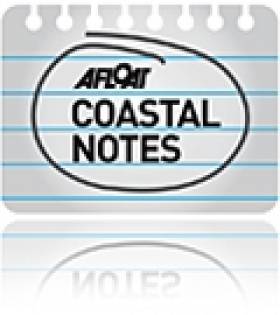Displaying items by tag: Sailing Ireland
Expansion at Scotland's Oban Marina
With a total investment of £110,000 on the latest phase of developments at Oban Marina on the Isle of Kerrera, the marina is set for another successful season. Varis Engineering from Inverness supplied 24 new 12-metre finger pontoons that have been installed by Tobermory’s North West Marine in time for the influx of visiting boat owners this season.
Over the past five years, the owners of Oban Marina - who also hold in their business portfolio the highly acclaimed Nanny Cay Resort and Marina in Tortola, BVIs - have gradually upgraded and expanded their Scottish West Coast marina base which has seen an increase in visitors year-on-year. It has proved a popular stopover for international, south coast and local boat owners and this season will see the greatest number of visiting rallies and events hosted at Oban Marina – a great boost for the local economy.
The marina will host several new events as well as welcome back annual regattas including:
· The Three Peaks Yacht Race on 21st May
· The Festival of the Sea Open Day on 31st May (in association with the Scottish Association for Marine Science)
· The Great British RIB Rally on the 17th June
· The Clyde Cruising Club’s Centenary Dinner on 30th July
· West Highland Yachting Week on 1st August.
General Manager, Susan Deacon says: “This is a very exciting time for Oban Marina and it’s great that we are attracting such high profile events and regattas to the area. It’s good for everyone. Also, with 24 new 12m finger pontoons, we have the extra capacity and can now accommodate a total of 145 boats: up to 115 boats on pontoon berths and 30 on swinging moorings. We’ve also added three extra showers to help service the new berths and cut down on those summer queues. Last year a new water desalination unit was installed and this now provides plenty of water during the prime months.”
The provision of a much larger ferry for the Oban Marina to Oban shuttle service, allowed a greater numbers of visitors and marina/regatta guests to cross with ease to Oban throughout the season last year. Once again, the 63-person passenger service is running from 1st April through to the end of September 2010 and will be free for everyone on the Festival of the Sea Open Day on May 31st. The larger ferry proved a boost to visitor numbers to Kerrera, with many coming over for lunch at the popular Waypoint Grill & Bar.





























































